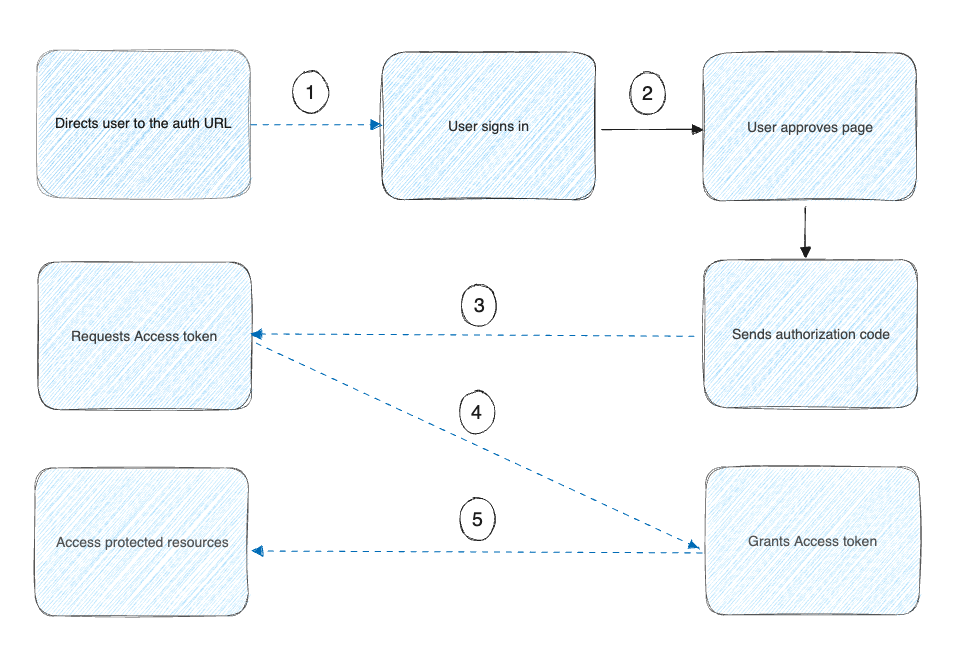Authentication
Note
This page assumes that you already have an Identity Provider (IdP), such as Google, Entra ID (formerly Azure AD) or Okta, which handles the authentication process and returns an access token.
Learn how you can let users authenticate from your extension using OAuth 2.0 via a web browser, and return to your extension.
In OAuth 2.0, the term "grant type" refers to the way an application gets an access token. Although OAuth 2.0 defines several grant types, this page only describes how to authorize users from your extension using the Authorization Code grant type.
Authorization code grant flow
The Authorization Code grant type is used by confidential and public clients to exchange an authorization code for an access token.
After the user returns to the client via the redirect URL, the application gets the authorization code from the URL and uses it to request an access token.


The image above shows that:
- The Docker extension asks the user to authorize access to their data.
- If the user grants access, the extension then requests an access token from the service provider, passing the access grant from the user and authentication details to identify the client.
- The service provider then validates these details and returns an access token.
- The extension uses the access token to request the user data with the service provider.
OAuth 2.0 terminology
- Auth URL: The endpoint for the API provider authorization server, to retrieve the auth code.
- Redirect URI: The client application callback URL to redirect to after auth. This must be registered with the API provider.
Once the user enters the username and password, they're successfully authenticated.
Open a browser page to authenticate the user
From the extension UI, you can provide a button that, when selected, opens a new window in a browser to authenticate the user.
Use the ddClient.host.openExternal API to open a browser to the auth URL. For example:
window.ddClient.openExternal("https://authorization-server.com/authorize?
response_type=code
&client_id=T70hJ3ls5VTYG8ylX3CZsfIu
&redirect_uri=${REDIRECT_URI});Get the authorization code and access token
You can get the authorization code from the extension UI by listing docker-desktop://dashboard/extension-tab?extensionId=awesome/my-extension as the redirect_uri in the OAuth app you're using and concatenating the authorization code as a query parameter. The extension UI code will then be able to read the corresponding code query-param.
Important
Using this feature requires the extension SDK 0.3.3 in Docker Desktop. You need to ensure that the required SDK version for your extension set with
com.docker.desktop.extension.api.versionin image labels is higher than 0.3.3.
Authorization
This step is where the user enters their credentials in the browser. After the authorization is complete, the user is redirected back to your extension user interface, and the extension UI code can consume the authorization code that's part of the query parameters in the URL.
Exchange the Authorization Code
Next, you exchange the authorization code for an access token.
The extension must send a POST request to the 0Auth authorization server with the following parameters:
POST https://authorization-server.com/token
&client_id=T70hJ3ls5VTYG8ylX3CZsfIu
&client_secret=YABbyHQShPeO1T3NDQZP8q5m3Jpb_UPNmIzqhLDCScSnRyVG
&redirect_uri=${REDIRECT_URI}
&code=N949tDLuf9ai_DaOKyuFBXStCNMQzuQbtC1QbvLv-AXqPJ_fNote
The client's credentials are included in the
POSTquery params in this example. OAuth authorization servers may require that the credentials are sent as a HTTP Basic Authentication header or might support different formats. See your OAuth provider docs for details.
Store the access token
The Docker Extensions SDK doesn't provide a specific mechanism to store secrets.
It's highly recommended that you use an external source of storage to store the access token.
Note
The user interface Local Storage is isolated between extensions (an extension can't access another extension's local storage), and each extension's local storage gets deleted when users uninstall an extension.
What's next
Learn how to publish and distribute your extension